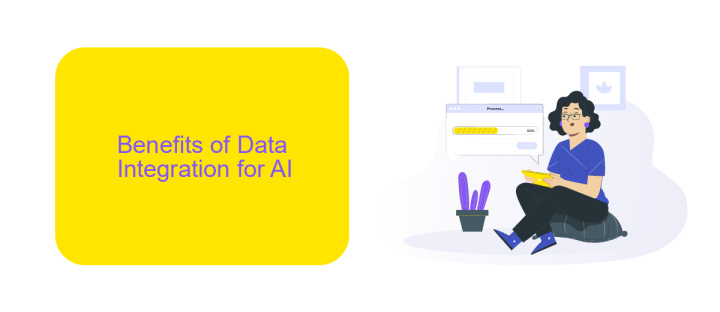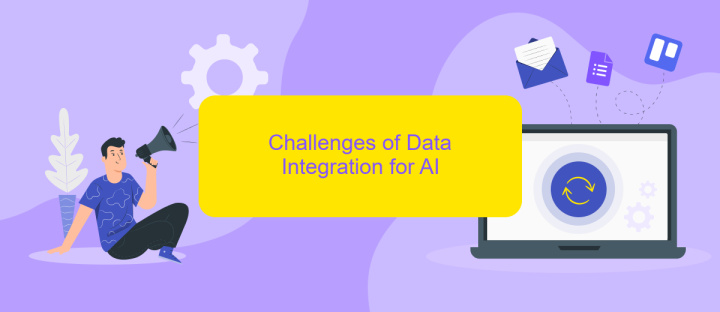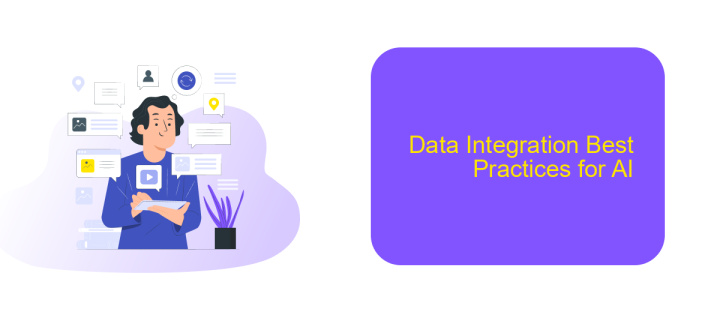Data Integration and AI
Data integration and artificial intelligence (AI) are transforming the way organizations manage and utilize information. By seamlessly combining data from diverse sources, businesses can leverage AI to uncover insights, automate processes, and enhance decision-making. This article explores the synergy between data integration and AI, highlighting their critical roles in driving innovation and operational efficiency in today’s data-driven world.
Data Integration Overview
Data integration is a critical process in modern data management, enabling the consolidation of data from diverse sources into a unified view. This process ensures that data is accessible, reliable, and ready for analysis, which is particularly important for applications in artificial intelligence and machine learning.
- Combining data from different databases and data warehouses
- Ensuring data consistency and accuracy
- Facilitating real-time data access and updates
- Enhancing data quality and reducing redundancy
Services like ApiX-Drive play a pivotal role in simplifying data integration. ApiX-Drive offers a user-friendly interface that allows businesses to automate data transfers between various platforms without requiring extensive coding skills. By leveraging such tools, organizations can streamline their data workflows, ensuring that integrated data is readily available for AI-driven insights and decision-making.
Benefits of Data Integration for AI

Data integration plays a crucial role in enhancing the capabilities of Artificial Intelligence (AI) systems. By consolidating data from various sources, organizations can provide AI models with comprehensive and diverse datasets, leading to more accurate predictions and insights. This integration helps in breaking down data silos, ensuring that AI algorithms have access to all necessary information, which significantly improves their learning process and overall performance. Furthermore, integrated data enhances the ability to identify patterns and correlations that might be missed when data is fragmented.
Moreover, tools like ApiX-Drive simplify the process of data integration, enabling seamless connectivity between disparate systems and databases. By automating data transfer and synchronization, ApiX-Drive ensures that AI systems always work with the most up-to-date information. This not only saves time and reduces manual errors but also allows organizations to focus on leveraging AI for strategic decision-making. In essence, effective data integration powered by solutions like ApiX-Drive is foundational for maximizing the potential of AI, driving innovation, and achieving business objectives.
Challenges of Data Integration for AI

Data integration for AI poses several significant challenges that can hinder the effective utilization of artificial intelligence technologies. These challenges stem from the complex nature of data management and the diverse sources from which data is collected.
- Data Quality and Consistency: Ensuring high-quality and consistent data across various sources is a major hurdle. Inconsistent data can lead to inaccurate AI predictions and insights.
- Data Privacy and Security: Protecting sensitive information while integrating data is crucial. Compliance with data protection regulations such as GDPR adds another layer of complexity.
- Scalability: As the volume of data grows, scaling data integration processes becomes increasingly difficult. Efficiently managing and processing large datasets is essential for AI applications.
- Compatibility Issues: Integrating data from different systems and formats can be challenging. Ensuring compatibility and seamless data flow requires sophisticated tools and platforms.
- Real-Time Data Integration: For many AI applications, real-time data processing is critical. Achieving real-time integration necessitates robust infrastructure and advanced technologies.
To address these challenges, leveraging integration platforms like ApiX-Drive can be highly beneficial. ApiX-Drive offers automated data integration solutions that simplify the process of connecting diverse data sources, ensuring data quality, and enabling real-time data flow. By utilizing such services, organizations can streamline their data integration efforts and enhance the effectiveness of their AI initiatives.
Data Integration Best Practices for AI

Effective data integration is crucial for leveraging AI capabilities. Ensuring that data from diverse sources is accurately combined, cleaned, and harmonized enhances the performance of AI models. This process involves several best practices to ensure seamless integration and optimal outcomes.
First, establish a clear data integration strategy that aligns with your AI objectives. This includes identifying relevant data sources, understanding data formats, and determining the necessary transformations. Utilizing tools like ApiX-Drive can simplify the integration process by automating data transfers and ensuring consistency across platforms.
- Define data governance policies to maintain data quality and compliance.
- Implement robust data security measures to protect sensitive information.
- Utilize ETL (Extract, Transform, Load) processes for efficient data handling.
- Regularly monitor and update data integration workflows to adapt to changes.
Lastly, continuously evaluate the performance of your integrated data to ensure it meets AI model requirements. By following these best practices, organizations can enhance their AI initiatives, leading to more accurate predictions and insights. Leveraging services like ApiX-Drive can streamline the integration process, making it more efficient and reliable.
- Automate the work of an online store or landing
- Empower through integration
- Don't spend money on programmers and integrators
- Save time by automating routine tasks
Conclusion
In conclusion, the integration of data and AI has become a cornerstone for modern businesses seeking to leverage advanced analytics and automation. By seamlessly connecting disparate data sources, organizations can uncover valuable insights, optimize operations, and drive innovation. The use of platforms like ApiX-Drive simplifies this process, enabling efficient data integration without the need for extensive coding knowledge, thereby democratizing access to powerful AI tools.
As we move forward, the synergy between data integration and AI will only grow stronger, offering unprecedented opportunities for businesses to enhance decision-making and customer experiences. It is essential for companies to invest in robust integration solutions and stay adaptable to the rapidly evolving technological landscape. By doing so, they can ensure that they remain competitive and continue to harness the full potential of their data assets.
FAQ
What is data integration and why is it important?
How can AI enhance data integration processes?
What challenges are commonly faced during data integration?
How can businesses automate data integration?
What is ApiX-Drive and how does it help with data integration?
Apix-Drive will help optimize business processes, save you from a lot of routine tasks and unnecessary costs for automation, attracting additional specialists. Try setting up a free test connection with ApiX-Drive and see for yourself. Now you have to think about where to invest the freed time and money!


